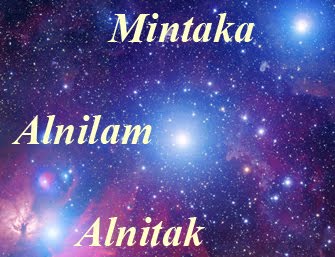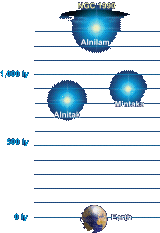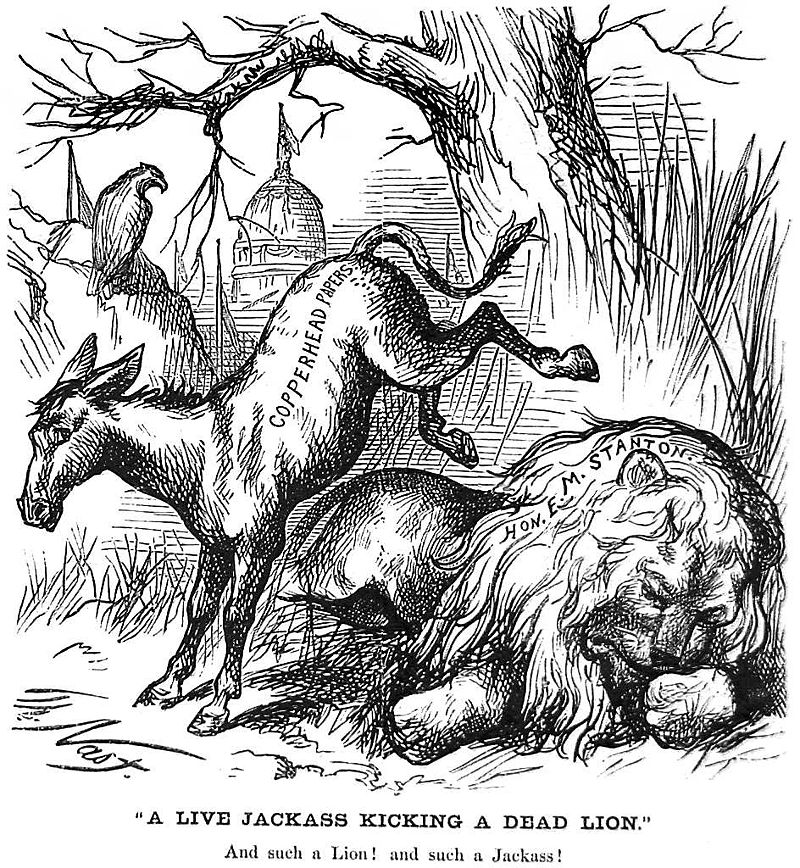Apart from the Orion Nebula, the Horsehead Nebula might be the most photographed deep-sky object of them all.
Because these objects have been photographed so often, many photographers try to bring their own twist to the portraits of them. Rogelio Bernal Andreo, one of the best astrophotograpers in the world, has brought out intricate and fascinating details in the dust. In the Milky Way, dust signals the presence of gas, and without gas, there can be no star formation.
Rogelio's picture is full of fantastic details. One thing I particularly like, perhaps surprisingly, is the "explosion" of little blue stars surrounding mighty Alnilam (at 9 o'clock) like firecrackers going off all at once. Much of the field of view is very dusty, but in the vicinity of Alnilam the dust seems to clear, and the stars can shine through. There is in fact an
Alnilam cluster of stars, which is now quite widely scattered. But the stars seemingly surrounding Alnilam are
so scattered that I doubt that they "belong" to Alnilam.
Alnilam, by the way, is either a very, very bright star or a stupendously bright star. We know how bright it is in our skies (mag.1.7), but we frankly don't know how far away it is.
Hipparcos, measured the distance to it, but Hipparcos was not that very sensitive. For objects farther away than 500 light-years, the margin of error became very large.
Alnilam is certainly at least 1000 light-years away, and the original Hipparcos measurement suggested an uncertain distance of ~1,300 light-years. But new analyses of the Hipparcos measurements suggest that the distance to Alnilam is closer to 2,000 light-years. If that is the case, the visual luminosity of Alnilam may be as high as 64,000 Suns and its bolometric (total) luminosity may be as high as 863,000 L
☉, a tremendous luminosity. In any case, it seems certain that Alnilam is farther away and brighter than Alnitak and Mintaka (the other stars of Orion's Belt).
Sigma Orionis (top center), Alnitak (center left)
and the Horsehead Nebula (center). Photo: Neil Viljoen.
But another fantastic star in Rogelio's picture is certainly
Sigma Orionis. Sigma Orionis is a very young multiple star system, dominated by a massive O-type component. The Sigma Orionis system has been compared with the
Trapezium in the Orion Nebula. Please note that the red nebulosity in the Horsehead region is all due to the ionizing power of Sigma Orionis.
At right is Neil Viljoen's portrait of Sigma Orionis, Altnitak, the Horsehead Nebula and the Flame Nebula. I like it, because it brings out some of the power of Sigma Orionis, and of Alnitak, of course!
Alnitak, seemingly so close to the heat of the action here, nevertheless seems strangely removed from it. The fantastic nebulas in the area don't seem to care about Alnitak. The bright star looks like a foreground object to me, but what do I know?
Ann
 Orion: Belt, Flame, and Horsehead
Orion: Belt, Flame, and Horsehead








